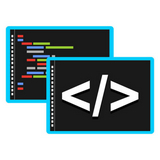
在 go 语言中,并发编程的核心是 goroutine 和 channel。goroutine 是轻量级的执行线程,而 channel 则是 goroutine 之间进行通信的管道,它们共同实现了 go 提倡的“通过通信共享内存,而不是通过共享内存来通信”的并发哲学。理解并正确使用 channel 对于编写高效、无死锁的 go 并发程序至关重要。
Goroutine 是由 Go 运行时管理的轻量级线程。通过 go 关键字,我们可以轻松地启动一个 Goroutine 来并发执行函数。
Channel 是一种类型化的管道,用于 Goroutine 之间发送和接收值。它们提供了一种同步机制,确保数据在并发访问时的安全。
考虑一个场景:我们希望有多个 Goroutine 之间相互发送和接收整数。
首先,我们来看一个两个 Goroutine 之间通信的简单例子:
package main
import (
"fmt"
"math/rand"
"time" // 导入time包以初始化随机数种子
)
// Routine1 向 commands 发送数据,并从 responses 接收数据
func Routine1(commands chan int, responses chan int) {
rand.Seed(time.Now().UnixNano()) // 初始化随机数种子
for i := 0; i < 10; i++ {
val := rand.Intn(100)
commands <- val // 发送数据到 commands
fmt.Printf("Routine1 发送: %d\n", val)
resp := <-responses // 从 responses 接收数据
fmt.Printf("Routine1 接收: %d\n", resp)
}
close(commands) // 完成发送后关闭 commands 通道
}
// Routine2 从 commands 接收数据,并向 responses 发送数据
func Routine2(commands chan int, responses chan int) {
rand.Seed(time.Now().UnixNano() + 1) // 初始化随机数种子,确保与Routine1不同
for {
x, open := <-commands // 从 commands 接收数据
if !open {
fmt.Println("Routine2: commands 通道已关闭,退出。")
close(responses) // 接收完毕后关闭 responses 通道
return
}
fmt.Printf("Routine2 接收: %d\n", x)
y := rand.Intn(100)
responses <- y // 向 responses 发送数据
fmt.Printf("Routine2 发送: %d\n", y)
}
}
func main() {
commands := make(chan int)
responses := make(chan int)
go Routine1(commands, responses)
Routine2(commands, responses) // main Goroutine 阻塞在此,直到 Routine2 退出
// 确保所有输出完成,可以等待一段时间或使用WaitGroup
time.Sleep(100 * time.Millisecond)
fmt.Println("主程序结束。")
}在这个例子中,Routine1 和 Routine2 通过 commands 和 responses 两个通道进行双向通信。Routine1 发送后等待 Routine2 的响应,Routine2 接收后发送响应。这种模式工作正常。
现在,我们尝试引入第三个 Goroutine,让 Routine1 同时与 Routine2 和 Routine3 通信。
package main
import (
"fmt"
"math/rand"
"time"
)
// Routine1 现在与 Routine2 和 Routine3 通信
func Routine1(commands chan int, responses chan int, command3 chan int, response3 chan int) {
rand.Seed(time.Now().UnixNano())
for i := 0; i < 5; i++ { // 减少循环次数以更快观察结果
val := rand.Intn(100)
commands <- val // 发送给 Routine2
command3 <- val // 发送给 Routine3
fmt.Printf("Routine1 发送: %d (to 2 & 3)\n", val)
resp2 := <-responses // 接收来自 Routine2 的响应
fmt.Printf("Routine1 接收 (from 2): %d\n", resp2)
resp3 := <-response3 // 接收来自 Routine3 的响应
fmt.Printf("Routine1 接收 (from 3): %d\n", resp3)
}
close(commands)
close(command3) // 关闭与Routine3相关的发送通道
}
// Routine2 保持不变
func Routine2(commands chan int, responses chan int) {
rand.Seed(time.Now().UnixNano() + 1)
for {
x, open := <-commands
if !open {
fmt.Println("Routine2: commands 通道已关闭,退出。")
close(responses)
return
}
fmt.Printf("Routine2 接收: %d\n", x)
y := rand.Intn(100)
responses <- y
fmt.Printf("Routine2 发送: %d\n", y)
}
}
// Routine3 新增,与 Routine1 通信
func Routine3(command3 chan int, response3 chan int) {
rand.Seed(time.Now().UnixNano() + 2)
for {
x, open := <-command3
if !open {
fmt.Println("Routine3: command3 通道已关闭,退出。")
close(response3)
return
}
fmt.Printf("Routine3 接收: %d\n", x)
y := rand.Intn(100)
response3 <- y
fmt.Printf("Routine3 发送: %d\n", y)
}
}
func main() {
commands := make(chan int)
responses := make(chan int)
// command 和 response 通道未声明!
// go Routine1(commands, responses, command, response)
// Routine2(commands, responses)
// Routine3(command, response)
}直接运行上述 main 函数,会遇到编译错误,因为 command 和 response 变量在 main 函数中并未声明。即使我们将 main 函数中的注释去掉,它也无法运行,因为 command 和 response 实际上是未定义的变量。
如果我们在 main 函数中不声明 command 和 response,而是直接传递,Go 编译器会报错 undeclared name: command。假设我们犯了一个低级错误,将 command 和 response 误写为其他已声明的零值变量(例如 var command chan int),那么它们将是 nil 通道。向 nil 通道发送数据或从 nil 通道接收数据都会导致 Goroutine 永久阻塞,进而引发经典的“所有 Goroutine 都已休眠 - 死锁!”错误。
原始代码的错误在于 main 函数中,用于 Routine1 和 Routine3 之间通信的 command 和 response 这两个通道变量没有被声明和初始化。
当一个通道变量被声明但未通过 make 函数初始化时,它的零值是 nil。对 nil 通道进行发送或接收操作都会导致 Goroutine 永久阻塞。
在 main 函数中:
func main() {
commands := make(chan int)
responses := make(chan int)
// 缺少了 command 和 response 的 make(chan int) 初始化
go Routine1(commands, responses,command, response ) // 这里的 command 和 response 是未声明的
Routine2(commands, responses)
Routine3(command, response) // 这里的 command 和 response 也是未声明的
}由于 command 和 response 未声明,Go 编译器会直接报错。如果它们被声明为 var command chan int 但没有 make,那么它们将是 nil 通道,导致 Routine1 和 Routine3 立即阻塞,引发死锁。
解决这个问题的关键非常简单:在 main 函数中正确地声明并初始化所有需要的通道。
package main
import (
"fmt"
"math/rand"
"time"
)
// Routine1 现在与 Routine2 和 Routine3 通信
func Routine1(commands chan int, responses chan int, command3 chan int, response3 chan int) {
rand.Seed(time.Now().UnixNano())
for i := 0; i < 5; i++ {
val := rand.Intn(100)
commands <- val // 发送给 Routine2
command3 <- val // 发送给 Routine3
fmt.Printf("Routine1 发送: %d (to 2 & 3)\n", val)
resp2 := <-responses // 接收来自 Routine2 的响应
fmt.Printf("Routine1 接收 (from 2): %d\n", resp2)
resp3 := <-response3 // 接收来自 Routine3 的响应
fmt.Printf("Routine1 接收 (from 3): %d\n", resp3)
}
close(commands)
close(command3) // 完成发送后关闭与Routine3相关的发送通道
fmt.Println("Routine1 完成并关闭通道。")
}
// Routine2 保持不变
func Routine2(commands chan int, responses chan int) {
rand.Seed(time.Now().UnixNano() + 1)
for {
x, open := <-commands
if !open {
fmt.Println("Routine2: commands 通道已关闭,退出。")
close(responses) // 接收完毕后关闭 responses 通道
return
}
fmt.Printf("Routine2 接收: %d\n", x)
y := rand.Intn(100)
responses <- y
fmt.Printf("Routine2 发送: %d\n", y)
}
}
// Routine3 新增,与 Routine1 通信
func Routine3(command3 chan int, response3 chan int) {
rand.Seed(time.Now().UnixNano() + 2)
for {
x, open := <-command3
if !open {
fmt.Println("Routine3: command3 通道已关闭,退出。")
close(response3) // 接收完毕后关闭 response3 通道
return
}
fmt.Printf("Routine3 接收: %d\n", x)
y := rand.Intn(100)
response3 <- y
fmt.Printf("Routine3 发送: %d\n", y)
}
}
func main() {
commands := make(chan int)
responses := make(chan int)
command3 := make(chan int) // 正确声明并初始化 command3
response3 := make(chan int) // 正确声明并初始化 response3
go Routine1(commands, responses, command3, response3)
go Routine2(commands, responses) // 启动 Routine2 为 Goroutine
go Routine3(command3, response3) // 启动 Routine3 为 Goroutine
// 使用 select{} 阻塞 main Goroutine,防止其过早退出
// 或者使用 sync.WaitGroup 等待所有 Goroutine 完成
select {} // 这是一个简单的阻塞方式,实际应用中建议使用WaitGroup
// 为了演示目的,也可以使用 time.Sleep(time.Second) 确保 Goroutines 有足够时间运行
// time.Sleep(time.Second)
fmt.Println("主程序结束。")
}在修正后的 main 函数中,我们正确地使用了 make(chan int) 来初始化 command3 和 response3。此外,为了让 Routine2 和 Routine3 也能并发执行,我们同样使用 go 关键字启动它们。最后,为了防止 main Goroutine 过早退出导致其他 Goroutine 无法完成任务,我们使用 select {} 来阻塞 main Goroutine。在实际应用中,更推荐使用 sync.WaitGroup 来优雅地等待所有 Goroutine 完成。
Go 语言的通道本质上是双向的,即可以发送也可以接收。但在函数参数中,我们可以将其声明为单向通道,以限制其使用方式,从而提高代码的清晰度和安全性。
例如,我们可以修改 Routine1、Routine2 和 Routine3 的函数签名:
// Routine1 接收只发送通道和只接收通道
func Routine1(commands chan<- int, responses <-chan int, command3 chan<- int, response3 <-chan int) { /* ... */ }
// Routine2 接收只接收通道和只发送通道
func Routine2(commands <-chan int, responses chan<- int) { /* ... */ }
// Routine3 接收只接收通道和只发送通道
func Routine3(command3 <-chan int, response3 chan<- int) { /* ... */ }这样做的好处是,编译器会强制执行这些方向性限制,防止在不该发送的地方发送,或在不该接收的地方接收,从而减少潜在的逻辑错误。
Go 语言是强类型语言,通道也不例外。一个 chan int 只能传输 int 类型的数据,一个 chan string 只能传输 string 类型的数据。
对于“是否可以创建通用通道来传输 int, string 等不同类型的数据?”这个问题,答案是:直接创建承载多种具体类型的通道是不行的。但是,可以通过以下方式实现:
使用 interface{} 类型: chan interface{} 可以传输任何类型的值,因为 interface{} 是 Go 中所有类型的根接口。
dataChan := make(chan interface{})
dataChan <- 123 // 发送 int
dataChan <- "hello" // 发送 string
dataChan <- struct{}{} // 发送 struct
val1 := <-dataChan // val1 的类型是 interface{}
val2 := <-dataChan
// 需要进行类型断言来获取原始类型
if i, ok := val1.(int); ok {
fmt.Println("Received int:", i)
}注意事项: 使用 interface{} 会牺牲类型安全性,并且在接收时需要进行类型断言,这会增加运行时开销和代码复杂性。除非确实需要处理异构数据流,否则应尽量避免。
定义结构体封装: 如果你总是发送几种特定的类型,可以定义一个结构体来封装这些类型,并通过通道传输这个结构体。
type Message struct {
Type string
IntVal int
StrVal string
// ... 其他可能的数据字段
}
msgChan := make(chan Message)
msgChan <- Message{Type: "int", IntVal: 123}
msgChan <- Message{Type: "string", StrVal: "hello"}这种方式提供了更好的类型安全性和可读性,但也要求发送方和接收方都遵循消息结构。
Go 语言的并发模型以其简洁和强大而著称。通过 Goroutine 和 Channel,开发者可以轻松构建高并发、高性能的应用程序。然而,正确地管理 Goroutine 间的通信是避免死锁和运行时错误的关键。本文通过一个实际案例,强调了通道初始化、正确传递以及理解通道特性(如单向性和类型安全)的重要性。掌握这些概念和最佳实践,将有助于编写更健壮、更易于维护的 Go 并发代码。
以上就是Go 并发编程:多 Goroutine 间的高效通信与常见陷阱的详细内容,更多请关注php中文网其它相关文章!

编程怎么学习?编程怎么入门?编程在哪学?编程怎么学才快?不用担心,这里为大家提供了编程速学教程(入门课程),有需要的小伙伴保存下载就能学习啦!

Copyright 2014-2025 https://www.php.cn/ All Rights Reserved | php.cn | 湘ICP备2023035733号